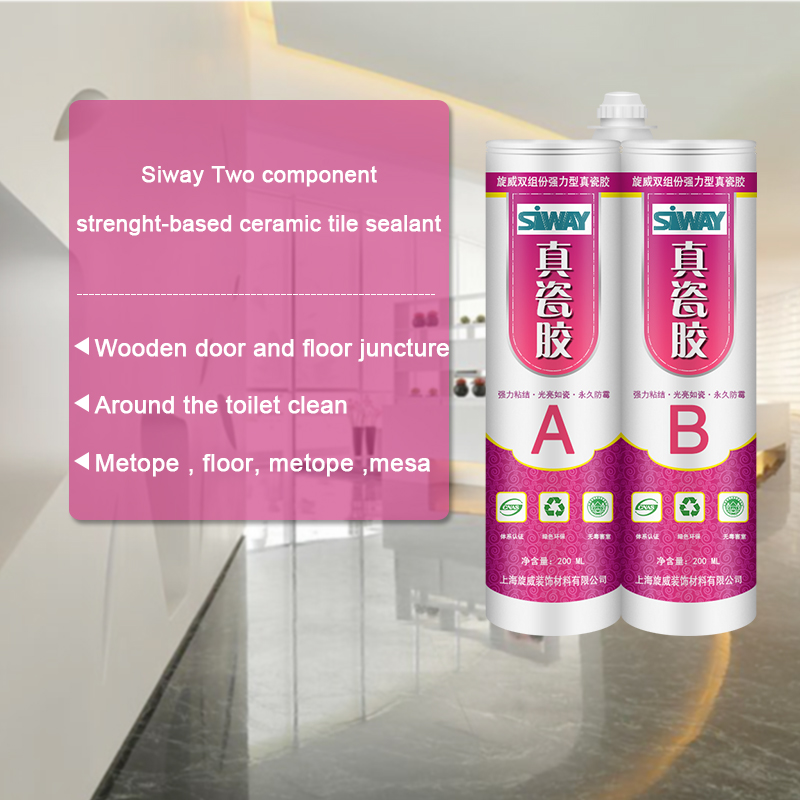29 Years Factory Siway SV-602 Epoxy Structural Adhesive A/B for Jersey Importers
Short Description:
Description SV-602 is a 2-part structural epoxy adhesive developed for such application as dry fixing cladding. It has strong adhesion to metals, woods, reinforced plastics stone, ceramic and masonry. It is the best choice for bonding parts which must withstand weather, moisture and temperature fluctuations. SV-602 will adhere with minimum surface preparation and has a low coefficient of expansion. Key Features 1. Room temperature curing Epoxy adhesive 2. Fast cure at room temperature,...
We know that we only thrive if we can guarantee our combined price competiveness and quality advantageous at the same time for 29 Years Factory Siway SV-602 Epoxy Structural Adhesive A/B for Jersey Importers, we are looking forward to even greater cooperation with overseas customers based on mutual benefits. Please feel free to contact us for more detail
Description
SV-602 is a 2-part structural epoxy adhesive developed for such application as dry fixing cladding. It has strong adhesion to metals, woods, reinforced plastics stone, ceramic and masonry. It is the best choice for bonding parts which must withstand weather, moisture and temperature fluctuations. SV-602 will adhere with minimum surface preparation and has a low coefficient of expansion.
Key Features
1. Room temperature curing Epoxy adhesive
2. Fast cure at room temperature, <40 min for reaching a tack-free status under standard environment (STD: 23℃, 50% humidity)
3. Mix ratio of 1:1 by volume or by weight
4. Good mechanical property
5. Bonds a wide variety of building materials
6. Good waterproofing and chemical resistance
Basic Application
1, the external walls of stone material, ceramic and other hang bond;
2, concrete, ceramics, stone, wood and other prefabricated split, bonding and jointing;
3, concrete, stone and so on crack repair;
4, the structure of the localization, anchor, reinforcement and reinforcement.
Technical data sheet
The following data is for reference only and is not recommended for the specification
| Shear strength | Stainless steel-stainless steel/Standard conditions | ≥18 | JC887-2001 | ||
| Pressure shear strength | Stone-stone/ Standard conditions | ≥12 | |||
| Stone-stone/ The freeze-thaw cycle 50 times | ≥10 | ||||
| Stone – stainless steel/ Standard conditions | ≥12 | ||||
| Standard conditions:Temperature=23℃,relative humidity=50%,48 hours curing | |||||
| attribute | SV-602-A | SV-602-B | SV-602(After mixing) | ||
| Colour | gray | white | grey | ||
| Density(g/cm³) | 1.8 | 1.8 | 1.8 | ||
| Viscosity(PaS) | 200-400 | 150-250 | |||
| Effective operating time(23℃) | N/A | N/A | 20min | ||
Certification
JC 887-2001
Color
Part A-Grey Paste/Part B-White Paste
Package
9kg/9kg per unit and 15kg/15kg per unit
Shelf life
12 months
Note
If you want the TDS or MSDS or other details, please contact with our sales person.
Evans Cycles’ videos provide a range of tutorials and training to maintain optimal performance of your bike. In this video, our expert Jules gives you a step by step guide to adjusting disk brakes.
This video provides you with a detailed walk through on how to set up your rim brakes. The guide it’s on your road, hybrid or mountain bike.
Tree pruning and trimming is essential to a tree’s health, but is not as easy as it looks. An improper pruning cut can rip the bark or injure the trunk of the tree. For more information on tree pruning, visit https://www.davey.com/residential-services/tree-care-maintenance/tree-trimming-pruning-services.
Steve Nagy, Davey Tree Service expert and ISA board certified master arborist, tells you why, when and how to properly prune your trees.
WHEN SHOULD YOU PRUNE YOUR TREES?
It’s a good idea to wait until the fall and winter to prune your trees. You can see the scaffolding branches of the tree and also visually inspect the non-essential branches. You eliminate the spread of pathogens and possible insect infestation in some of the pruning cuts you will be making on the tree during these seasons.
WHY SHOULD YOU PRUNE YOUR TREES?
• To remove dead, diseased and broken branches, maintaining tree health and ensuring safety
• Aesthetic reasons, allowing more light and wind to penetrate the crown
• To create vehicle or building clearance
KEEP IN MIND:
Safety is critical. If the tree needing to be pruned cannot be reached from the ground, it’s important to contact your local arborist for assistance. If the branches are in range of the utility wires, call your power company to complete the work.
WHAT SHOULD YOU LOOK FOR WHEN PRUNING YOUR TREES?
• Remove any dead, diseased or broken branches for the health of the tree.
• Remove water sprouts and suckers.
• Look for a strong central leader and examine the branching structure of the tree. Directionally prune the tree to make sure it maintains a strong healthy shape.
HOW DO YOU MAKE A PROPER PRUNING CUT?
• Make the first pruning cut one to two feet out from the parent branch or trunk. Start this cut under the tree branch you are pruning.
• The next pruning cut is the top cut, slightly further out from the first cut. This will allow the tree limb to drop smoothly when cut, and avoid tearing the bark off the tree.
• Finally, make a clean, smooth pruning cut to remove the remaining tree branch. Make it carefully, outside of the branch bark ridge and the evident collar, leaving no jagged edges.
Contact your local professionally trained arborist if you have any questions or need assistance with tree pruning.



